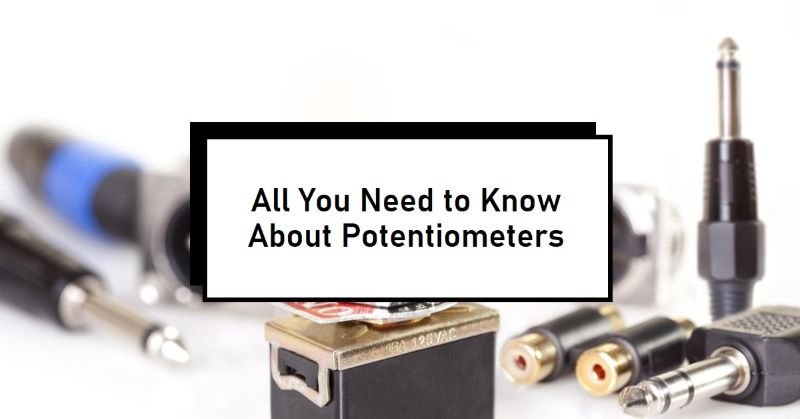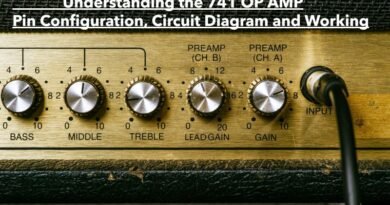Potentiometer Types and Characteristics – A Comprehensive Guide
What is Potentiometer?
A potentiometer, often abbreviated as ‘pot,’ is a versatile three-terminal resistor. It features a sliding or rotating contact that functions as an adjustable voltage divider, allowing for precise control over electrical devices. The fundamental principle behind a potentiometer involves its ability to vary resistance, thereby adjusting the output voltage according to the position of the sliding or rotating contact.
The construction of a potentiometer typically includes a resistive element, a sliding contact known as the wiper, and three terminals. Two terminals are connected to the ends of the resistive element, while the third terminal is connected to the wiper. By moving the wiper along the resistive element, one can change the resistance between the wiper and each terminal, effectively controlling the voltage output.
Potentiometer Pinout
Potentiometers typically feature three terminals, each playing a specific role in the device’s functionality.
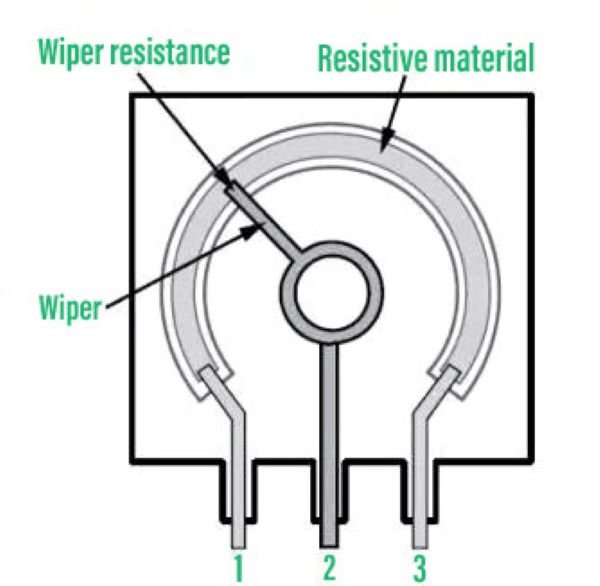
Terminal 1 (Counter-Clockwise, CCW): This terminal is connected to one end of the resistive element inside the potentiometer. When the wiper (Terminal 2) moves towards this terminal, the resistance between the CCW terminal and the wiper decreases, resulting in a lower voltage output. Conversely, the resistance between the CCW terminal and Terminal 3 (CW) increases.
Terminal 2 (Wiper): The wiper is the adjustable contact that slides along the resistive element. By rotating the potentiometer’s knob or slider, the wiper’s position changes, thus varying the potential difference between the wiper and the other two terminals (CCW and CW). This terminal is crucial as it determines the output voltage or resistance based on its position along the resistive track.
Terminal 3 (Clockwise, CW): Connected to the opposite end of the resistive element from Terminal 1, the CW terminal functions similarly to the CCW terminal but in reverse. As the wiper moves towards the CW terminal, the resistance between the CW terminal and the wiper decreases while the resistance between the CW terminal and the CCW terminal increases.
In practical applications, accurately connecting these terminals is important. For example, in a voltage divider circuit, Terminal 1 might be connected to a voltage source, Terminal 2 to the input of an analog-to-digital converter (ADC) and Terminal 3 to ground. This setup allows the potentiometer to act as a variable voltage divider, providing adjustable voltage to the ADC.
Potentiometer Circuit Diagram
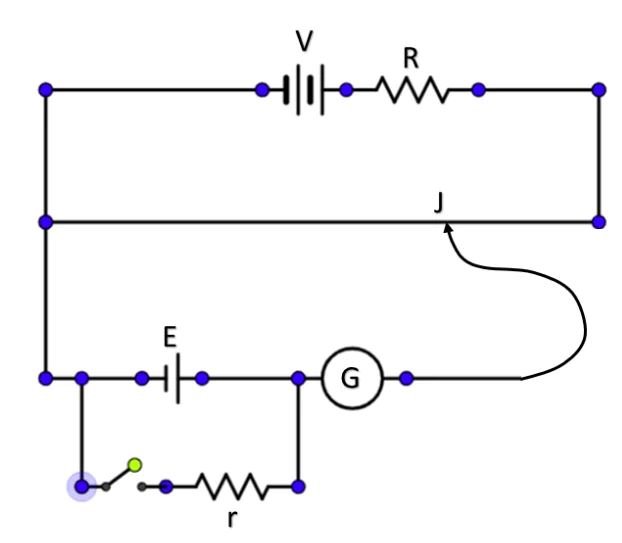
Types of Potentiometer
Let’s see the different types of potentiometer:
Rotary potentiometers
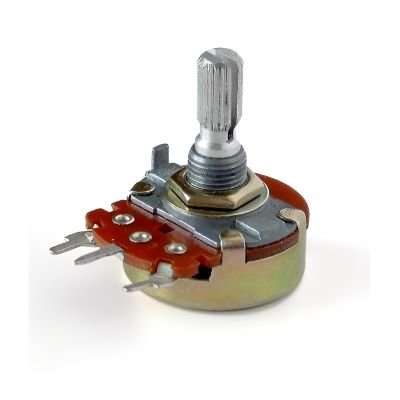
Rotary potentiometers are among the most common types. They feature a rotating knob or dial, which adjusts the resistance. This type is commonly used in applications such as volume controls in audio equipment, where a smooth, continuous adjustment is required. The main advantage of rotary potentiometers is their ease of use and intuitive design. However, they might not be suitable for applications requiring linear motion or digital interfacing.
Linear potentiometers
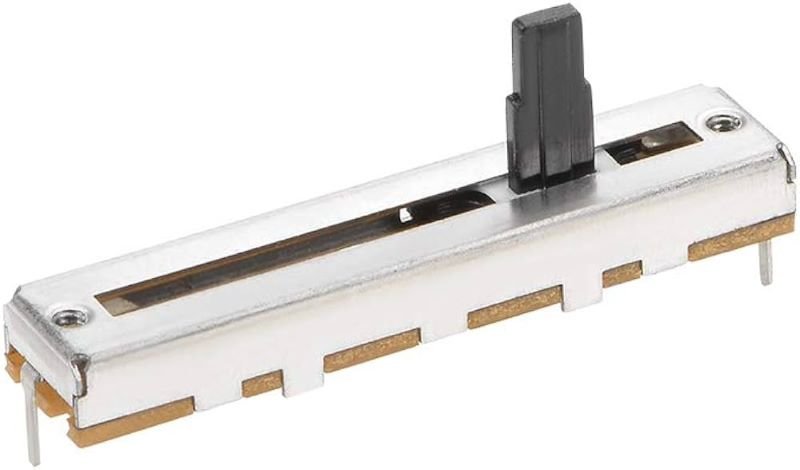
Linear potentiometers, on the other hand, operate using a sliding motion. This type is prevalent in audio mixing consoles and other equipment where precise, linear adjustments are necessary. Linear potentiometers offer the benefit of direct correlation between the slider position and resistance value. Their primary disadvantage is that they might wear out faster due to the sliding action, which can lead to maintenance issues over time.
Digital potentiometers
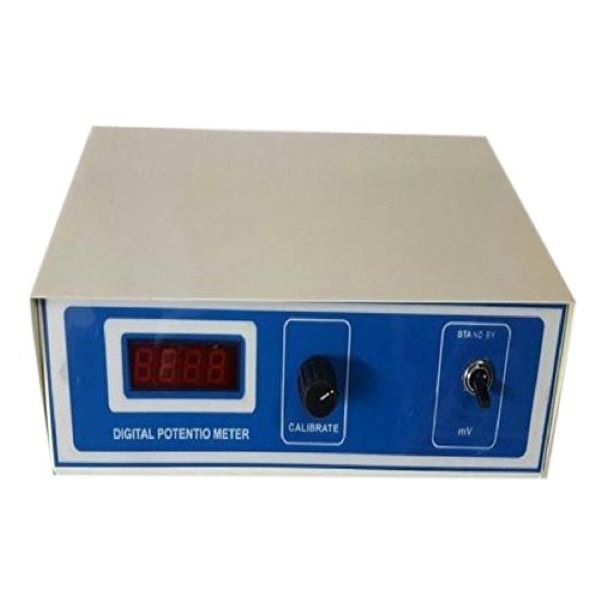
Digital potentiometers, or digipots, use electronic control to adjust resistance. They are known for their precision and programmability, making them ideal for applications requiring fine adjustments, such as in calibration equipment and digitally controlled audio systems. The main advantage of digital potentiometers is their ability to integrate with microcontrollers and digital systems seamlessly. However, they tend to be more expensive and require a power supply, which can be a limitation in battery-operated devices.
Specialized types like servo and trimmer potentiometers cater to niche applications. Servo potentiometers, used in servo motors, provide feedback for position control, ensuring precise movement. Trimmer potentiometers, or trim pots, are small, adjustable resistors used for calibrating and tuning circuits. They are often found in devices requiring fine adjustments post-manufacturing. Their compact size is advantageous for integrating into tight spaces, but they are not meant for frequent adjustments.
Characteristics of Potentiometer
Understanding these parameters is essential for choosing the right potentiometer for your specific application.
Resistance Range: The resistance range of a potentiometer is one of its most fundamental characteristics. It determines the span over which the resistance can be adjusted. Common resistance ranges include values from a few ohms to several megohms. A wider resistance range provides greater flexibility in tuning and adjusting circuit parameters.
Tolerance: The tolerance of a potentiometer indicates the accuracy of its resistance value. It is expressed as a percentage and represents the deviation from the nominal resistance. For example, a potentiometer with a 10% tolerance and a nominal resistance of 100 ohms could vary by ±10 ohms. Lower tolerance values mean higher precision, which is crucial in applications where exact resistance values are necessary.
Power Rating: The power rating specifies the maximum amount of power the potentiometer can dissipate without damage. It is typically measured in watts. Exceeding the power rating can lead to overheating and failure. Therefore, selecting a potentiometer with an adequate power rating for the intended application is vital for ensuring durability and reliability.
Linearity: Linearity refers to the relationship between the position of the wiper and the resistance value. In an ideal linear potentiometer, the resistance changes uniformly with the wiper’s movement. However, some potentiometers are designed to have a logarithmic or other non-linear response, depending on the application. High linearity is important for precision in signal control and accurate adjustments.
Mechanical Lifespan: The mechanical lifespan of a potentiometer is an indicator of its durability and reliability over time. It is typically defined by the number of cycles (full rotations or slides) the potentiometer can endure before mechanical wear and tear affect its performance. A longer mechanical lifespan is desirable in applications requiring frequent adjustments, as it ensures consistent performance and reduces the need for maintenance.
Each of these characteristics—resistance range, tolerance, power rating, linearity, and mechanical lifespan—plays a crucial role in determining the suitability of a potentiometer for various applications. Careful consideration of these parameters will help ensure optimal performance and longevity of the potentiometer in your electronic circuits.
Conclusion
In understanding potentiometers, it becomes evident that these devices play an imp role in numerous electronic applications. Potentiometers come in various types, each with distinct characteristics, making them versatile tools in both simple and complex systems. From straightforward audio adjustments to intricate industrial controls, the adaptability of potentiometers is undeniable.
